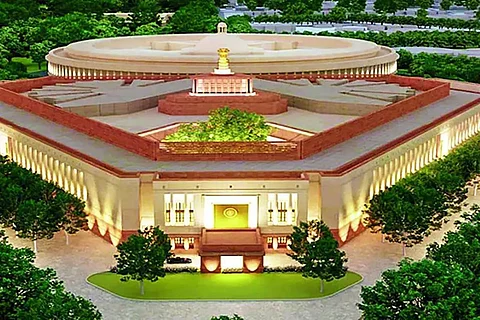

A recent discussion paper by central think tank NITI Aayog, Multidimensional poverty in india since 2005-06, found that multidimensional poverty declined to 11.28 per cent in 2022-23 from 29.17 per cent in 2013-14, Rao Inderjit Singh, minister of state (independent charge) of the Union ministry of statistics and programme implementation, told the Lok Sabha.
This implies 248.2 million people have escaped poverty in the nine-year period, the minister stated.
As of June 30, 2024, 397,437 standalone pumps have been installed under Pradhan Mantri Kisan Urja Suraksha evam Utthaan Mahabhiyan (PM-KUSUM) scheme, Shripad Yesso Naik, minister of state for new & renewable energy and power, told the Lok Sabha.
The generation capacity of the pumps is 1,944 megawatt and a total of 411,222 farmers have benefitted under the scheme, Naik said.
NTPC is establishing a green hydrogen hub at Pudimadaka in Andhra Pradesh, Naik told the Lok Sabha. The 1200-acre project includes the manufacture of renewable energy and hydrogen technology equipment, as well as the construction of green chemical production facilities in India.
The department of fisheries has implemented various initiatives and policies to tap into the vast potential of the country’s reservoirs, which cover over 3.3 million hectares, Rajiv Ranjan Singh, Union minister for fisheries, animal husbandry and dairying, told the Rajya Sabha.
The Centre approved a Rs 420.36 crore programme under the Blue Revolution scheme (2015-2020) to boost fisheries development in reservoirs, including in upstream areas. This included cage-based fish farming and stocking reservoirs with quality baby fish of commercially important species, Singh stated.
Under the Pradhan Mantri Matsya Sampada Yojana scheme, over the past four financial years (2020-21 to 2023-24) and the current year (2024-25), the Department of Fisheries approved projects worth Rs 1,809.23 crore. These projects include the establishment of 50,710 reservoir cages, the integrated development of 27 reservoirs and the stocking of fingerlings in 417,000 hectares of reservoir area.
The Dairy Processing and Infrastructure Development Fund (DIDF) scheme, which ran from January 2017 to January 2024, focused on modernising milk processing and chilling plants and increasing value addition, Singh told the Rajya Sabha.
The scheme aimed to benefit milk producers by providing them with an organised market and employment opportunities. As of June 2024, around 1.25 million women milk producers, making up 30 per cent of the total 4.25 million producer members, have been covered under the DIDF, the minister stated.